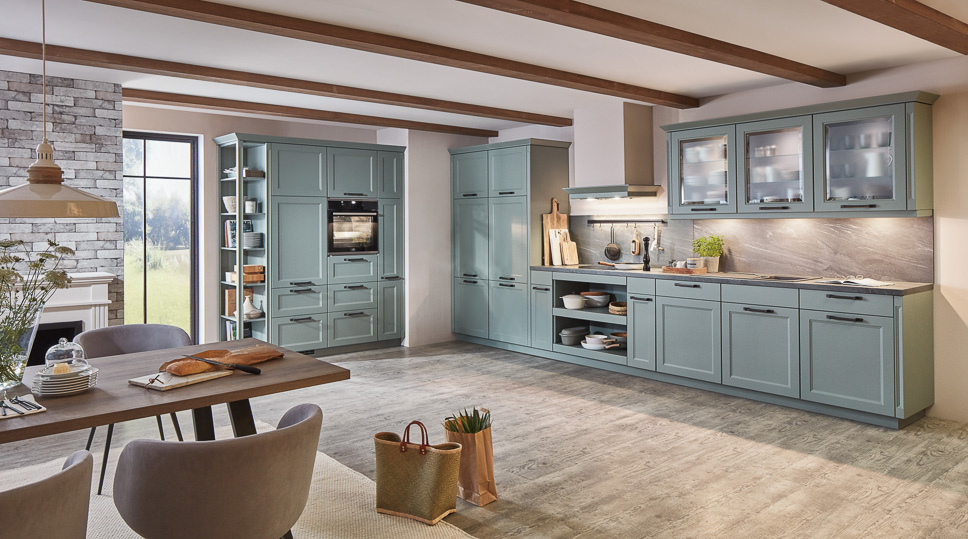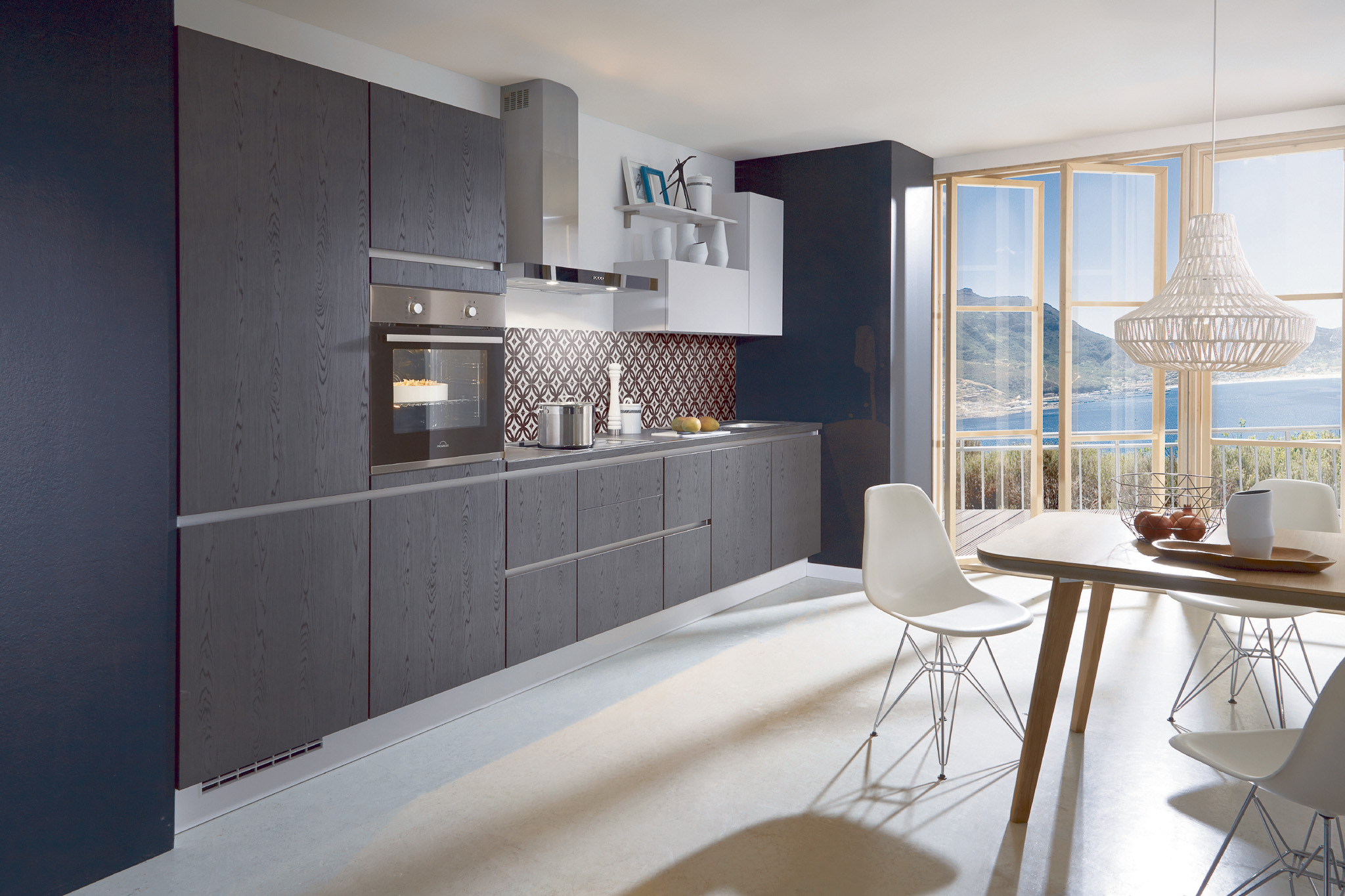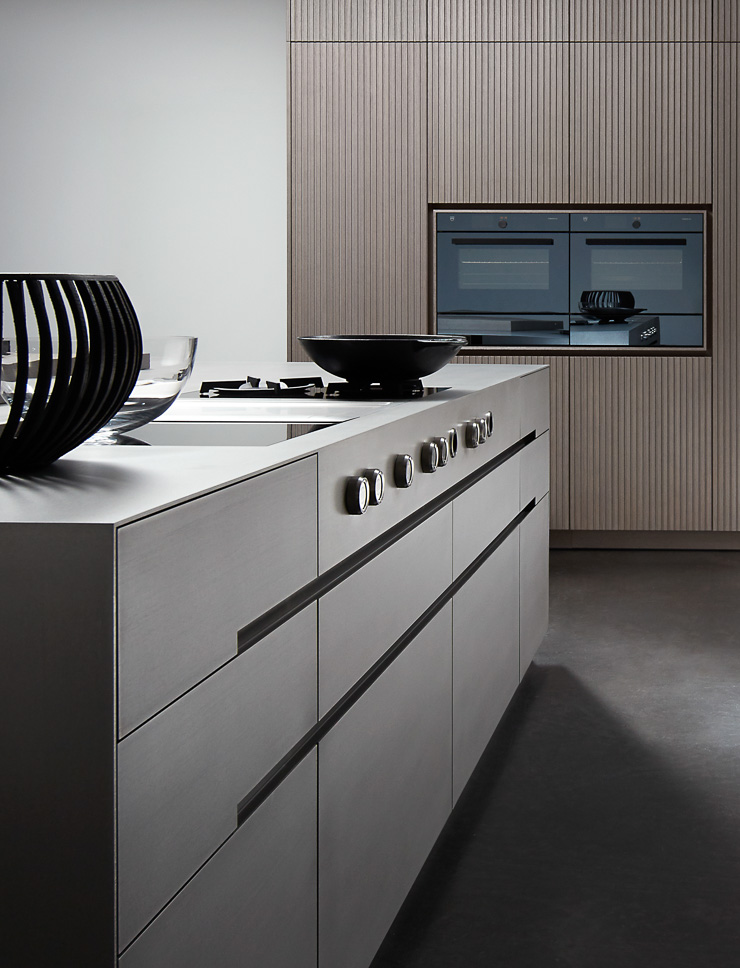Efficient kitchen design often centres around creating a ‘work triangle’ which is the space between your refrigerator, sink, and cooker. Also known as the ‘golden triangle’ the theory, which describes how to create a better ‘flow’ in the kitchen, dates back to the 1940s.
Kitchens are evolving into much more than a place to cook and prepare meals. We are spending more time in the kitchen than ever before, in part, due to our changing lifestyles. For many households, they have become more of a sociable dining area – a place to relax, unwind, entertain or even double up as a place to work or study.
What is the Kitchen Work Triangle?
The design concept seeks to maximise efficiency in the kitchen between the most frequented zones. The imaginary lines drawn between the oven/stove, sink and fridge form a triangle. The enclosure formed by these lines inform the busiest of kitchen tasks.
The number of steps taken and accessibility of these three focal points determines how quickly tasks are completed. The further apart one of these points are, the longer – in theory – tasks will take.
The model gained significant attention in the last century where kitchen space was limited and cooks were tasked with creating dishes to a deadline, emphasising the need for efficiency.
In today’s modern kitchen, we don’t necessarily work to such strict timelines, but the need to be efficient with one’s meal preparation, cooking and cleaning can lead to lost minutes. Over a period of years or decades, that could lead to hours wasted which could be avoided with better design consideration.
Similarly, while technology has improved significantly over the decades, there are still many apartments and small homes where kitchen space is limited. The desire to make the most of this space and balance aesthetics with functionality remains high for many owners.
In this era of convenience, there is an abundance of cooking appliances at our disposal, whether we want to bake, fry, grill or roast our ingredients. Air fryers, grills, microwave ovens, dishwashers, fridge freezers – in many kitchens, cooking and cleaning has changed based on advances in technology. Having these appliances close to hand – ideally within the triangle is advantageous, especially where there are more than two cooks in the kitchen or where there is a social element to cooking tasks.
Practical Examples of the Kitchen Work Triangle
The design layout of your kitchen is crucial. Not all kitchens are created equal and it can vary according to the homeowner’s needs. For example, left handers may have a preference for the positioning of certain appliances.
Where practical, it is recommended to have the sink, cooker and fridge in close proximity to one another. This allows for the simple switching of tasks (cleaning, cutting, cooking) while reducing time spent in non-cooking related activities.
The traditional work triangle model outlined the need for each side of the triangle to be no less than 1.2 metres, and no more than 2.7 metres apart. The perimeter of the entire triangle should be between 4 and 8 metres. For some kitchens, this may not be practical or possible. Now, we have much better ways to store, prepare and organise ingredients. Appliances have also made many of our tasks easier, with their portability enabling tasks that our ancestors could only dream about.
Kitchen islands are an effective way to create space – especially with one wall kitchens – allowing for additional prep space and storage. They also offer a way to cater for times where more than one person enters, or are near, the kitchen triangle, allowing the flexibility to work around or adjust the parameters of the cooking activities.
Larger kitchens can benefit from the working triangle principles, designating entire zones within the space – preparation, cooking and washing up. This also allows for the delegation of these tasks, ensuring each person can effectively perform their role.
Is it for me?
The kitchen work triangle can serve as a useful starting point to ensure convenience, accessibility and functionality in the kitchen. How you view your kitchen space will also reflect the attention that is needed to ensure optimal efficiency.
Other factors should be considered. Cultural differences where cooking/cleaning is a pastime enjoyed by various members of the family can mean the work triangle is difficult to enforce, but if used as a guideline, it can still be beneficial, especially when considering a new kitchen design layout for the first time.
–
At Surreal, we have been in the business of designing and installing kitchens for over two decades. Reach out to a member of our team to see how we can help design the kitchen of your dreams.




